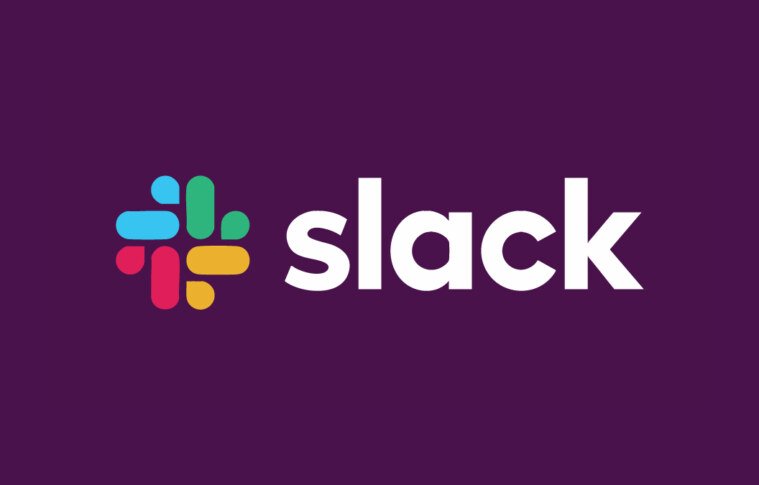Introduction: Launched in 2013 by Stewart Butterfield, Eric Costello, Cal Henderson, and Serguei Mourachov, Slack started as an internal communication tool for a gaming company. However, its simplicity and effectiveness in facilitating team communication quickly propelled it into a widely used platform across industries. Slack revolutionized workplace communication, offering a more organized and collaborative alternative to email. With a focus on ease of use, integration capabilities, and real-time messaging, Slack became a go-to solution for teams, eventually attracting millions of users globally. This case study explores how Slack’s design, strategic decisions, and market positioning allowed it to become indispensable for teams worldwide, while addressing the challenges it faced in an increasingly competitive market.
1. The Origins of Slack: From Gaming to Business Tool
Slack’s story began as an internal messaging system created for the game development company Tiny Speck, which was working on a project called Glitch (a social game that was eventually shut down). The development team of Glitch faced constant communication issues, which led to the creation of an internal messaging platform that would streamline discussions, help with file sharing, and improve overall collaboration.
a. Problem in Traditional Team Communication
Before Slack, workplace communication relied heavily on email, which had become overwhelming and inefficient, especially for teams working on complex projects or with remote members. Emails often led to fragmented conversations, missed messages, and cumbersome file sharing. Slack was designed to address these problems by offering a real-time, organized, and user-friendly alternative.
b. Key Features of Slack
Slack’s initial appeal was its simplicity and the ability to integrate multiple communication channels into a single platform. Key features included:
- Channels: Organized spaces for team communication based on projects, departments, or topics, reducing the clutter of endless email threads.
- Direct Messaging: Real-time one-on-one or small group conversations.
- File Sharing and Collaboration: Users could easily share files and collaborate in a centralized location, reducing the need to toggle between email and file-sharing apps.
- Search Functionality: A powerful search feature allowed teams to quickly find past conversations, files, and links.
- Integration with Other Tools: Slack could integrate with over 2,000 other apps, such as Google Drive, Trello, Zoom, and GitHub, making it a hub for all team activities.
2. Product-Market Fit: How Slack Addressed Pain Points for Teams
Slack’s rise to success was driven by its ability to fit the needs of modern teams. The product offered several advantages over traditional methods of communication, which made it an attractive alternative for businesses seeking a more efficient way to collaborate.
a. Focus on Real-Time Collaboration
Slack’s design was centered on real-time communication. Unlike email, which often leads to delays and disjointed conversations, Slack enabled immediate feedback, decisions, and actions. This shift from a passive to an active communication model made it indispensable for fast-moving teams.
b. Simplicity and Ease of Use
Slack’s user interface was minimalist, making it easy for employees to adopt and navigate without significant training. The straightforward design helped avoid the frustration of complex setups that many other enterprise tools had at the time.
c. Mobile Accessibility
As remote work and distributed teams became more common, Slack’s mobile app allowed users to stay connected no matter where they were located. This accessibility proved essential as companies began to embrace flexible working arrangements and global teams.
3. Growth and Scaling: Gaining Traction and Market Share
Slack’s ability to scale rapidly can be attributed to its viral growth model, which was amplified by word-of-mouth and its focus on user experience. The product quickly caught the attention of tech companies, startups, and eventually larger enterprises.
a. Freemium Model to Drive Adoption
One of Slack’s most successful strategies was its freemium model. The basic version of Slack was free, which lowered the barrier to entry for companies of all sizes. The free version allowed teams to use Slack with some limitations (e.g., message archives, file storage), but for larger teams or businesses that needed more storage, integrations, and administrative tools, Slack offered paid plans.
- Free Version: Enabled users to get familiar with Slack without any commitment, leading to a high adoption rate.
- Paid Plans: As teams grew and saw the value of Slack, many opted for paid plans that provided advanced features like unlimited message history, integrations with more tools, and enhanced security.
b. Viral Adoption Within Companies
Slack gained traction because employees started adopting it for team communication, bypassing email and internal communication tools. As word spread and more departments within companies began using it, Slack grew exponentially, particularly in the tech and startup communities. Over time, the product moved into larger companies, where its team-centric collaboration model was especially useful.
c. Slack’s Community and Culture
Another key to Slack’s growth was its community-building efforts. Slack not only provided a useful product but also invested in creating a community around it. The company hosted events, webinars, and a thriving Slack community of developers and power users, who exchanged tips and best practices for using the tool.
4. Slack’s Strategic Partnerships and Integrations
Slack’s success was also driven by its ability to integrate with a wide range of third-party tools that businesses were already using. These integrations allowed Slack to become a central hub for team workflows, reducing the need to toggle between multiple apps.
a. API and App Ecosystem
Slack opened up its platform for developers by providing a robust API. This allowed developers to create custom integrations and bots, extending the platform’s functionality to meet the specific needs of teams across different industries.
- App Directory: Slack’s App Directory now includes thousands of apps and integrations that help teams streamline their work, from project management tools like Asana and Trello to customer support software like Zendesk and Salesforce.
- Slackbot: Slack also introduced Slackbot, an AI-powered assistant that helps automate tasks, send reminders, and answer questions, further increasing productivity.
b. Partnerships with Larger Enterprises
Slack formed strategic partnerships with large companies such as Microsoft, Google, and Amazon Web Services (AWS). These partnerships were critical in positioning Slack as an enterprise solution, and the integrations with tools like Microsoft Teams and Google Drive ensured it worked seamlessly in a variety of work environments.
5. Challenges Faced by Slack
Despite its success, Slack faced several challenges in maintaining its growth trajectory and competing in the crowded communication tools space.
a. Competition from Microsoft Teams
One of the biggest challenges Slack faced was the rise of Microsoft Teams, which was bundled with Office 365 subscriptions. With Microsoft Teams, users could access a similar communication platform, often with greater integration into other productivity tools (Word, Excel, PowerPoint, etc.). This gave Microsoft a distinct advantage in terms of enterprise adoption.
- Response to Competition: Slack responded by doubling down on its user-friendly interface, improving integrations, and focusing on differentiating itself as a product that was more flexible and developer-friendly.
b. Monetization and Profitability
While Slack’s freemium model drove adoption, monetizing its large user base remained a challenge. Slack had to balance offering enough value in its free version to attract users while ensuring that the premium features appealed to larger organizations willing to pay for additional features.
6. Acquisition by Salesforce
In 2020, Slack was acquired by Salesforce for $27.7 billion, marking a major milestone in its journey. The acquisition aimed to position Salesforce’s customer relationship management (CRM) tools alongside Slack’s team communication platform, enabling deeper integration between business processes and collaboration tools.
The acquisition is expected to help Slack further penetrate the enterprise market and integrate its collaboration tools with Salesforce’s broader suite of services.
7. Key Takeaways
Slack’s success is a testament to its ability to address real-world pain points in team communication while remaining adaptable and open to growth. It shows that a product’s simplicity, combined with strategic partnerships, strong community engagement, and a focus on user needs, can propel it to market dominance.
Key Factors for Slack’s Success:
- User-Centric Design: Slack’s simplicity and ease of use made it accessible to a wide range of businesses, from startups to large enterprises.
- Effective Freemium Model: Offering a free version of the tool created viral adoption and encouraged teams to upgrade as their needs grew.
- Integration Ecosystem: The ability to integrate seamlessly with existing business tools was a key differentiator.
- Scalable and Flexible: Slack could be tailored to fit teams of all sizes and across industries, making it versatile.
- Strategic Acquisitions and Partnerships: The acquisition by Salesforce and partnerships with tech giants solidified Slack’s place in the enterprise collaboration space.
Conclusion
Slack’s evolution from a simple messaging tool to a core part of team collaboration workflows underscores the power of solving real business problems in a simple yet effective way. By maintaining a laser focus on user experience and adapting to the needs of both small teams and large enterprises, Slack has carved out a permanent place in the world of business communication.



